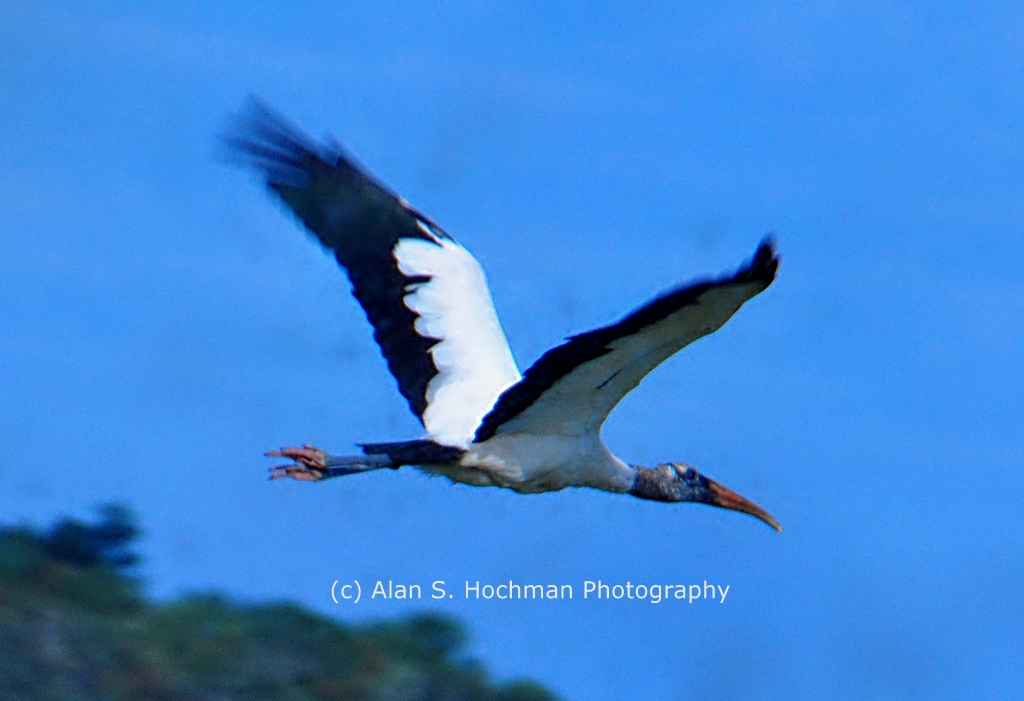WILDLIFE PHOTOGRAPHY – HOLEY LAND WMA, FL
Photographed at the Holey Land Wildlife Management Area is a Wood Stork in flight. This photo was taken with a Nikon D90 attached to a Tamron 28-300mm lens at 185mm. The Holey Land Management Area is located on the boundry of Broward and Palm Beach Counties on Okeechobee road (US-27) in Florida.
Wood Storks (Mycteria americana) are large water birds that are about 3 feet tall. Their wings open up 5 ½ feet wide. They are mostly white, but have a black tail and many black feathers under their wings. Storks are related to ibises, herons, and flamingoes. They have no feathers on their head and neck, so their black skin is easy to see from far away. This makes wood storks the only tall water birds with black, bald heads. Since they have no muscles attached to their voice box, they are very quiet birds. Every now and then they will croak like a bullfrog, or hiss like a snake. Wood storks have long, skinny legs and a long, curved beak. Storks can glide for a long time on warm wind currents. Sometimes they dive and flip as they soar down from high in the sky. When they do flap their wings, they look a bit clumsy. Sometimes they fly in flocks with egrets and ibises. Wood storks can cool off by urinating (peeing) on their legs. When the sun evaporates the urine, it cools them off, like sweat. If the wood storks are healthy, the wetlands where they live are probably healthy.
The impressively large and passive Wood Stork (Mycteria americana) is a waterbird that was formerly called the Wood Ibis, with the name change coming about because it is not actually an ibis at all. Wood Storks are the only stork native to North America and the only stork that breeds in this country, though they are generally found in the extreme southern parts of the country and their range extends as far south as Argentina in South America as well as into the Caribbean. Wood Storks are wetland birds and so they are commonly found near water sources such as swamps, marshes and ponds. They feed by wading in the shallows and eat small fish, tadpoles and crayfish. There is a small population which breeds in southern Florida, Georgia and South Carolina and it is this population which is considered to be endangered. However, those found between Mexico and Argentina are far more abundant and are not considered to be endangered.

Fabulous photo
Wow thats a cool looking bird dude!
http://www.World-Privacy.tk